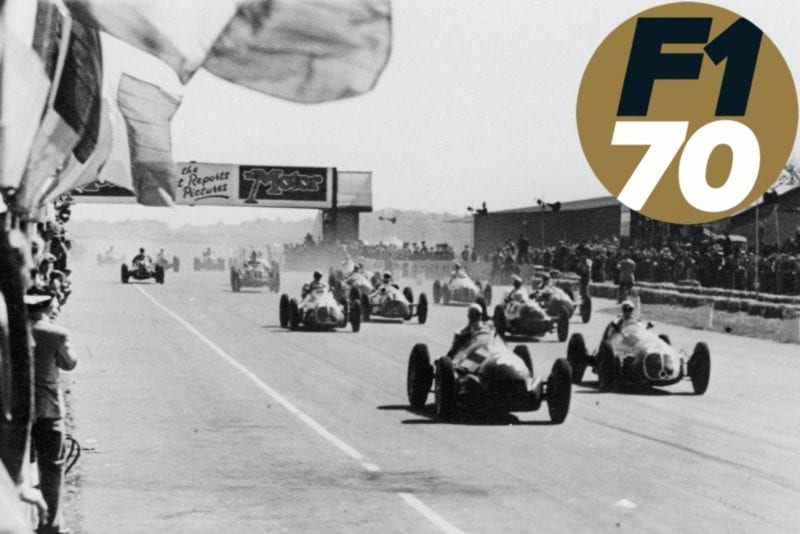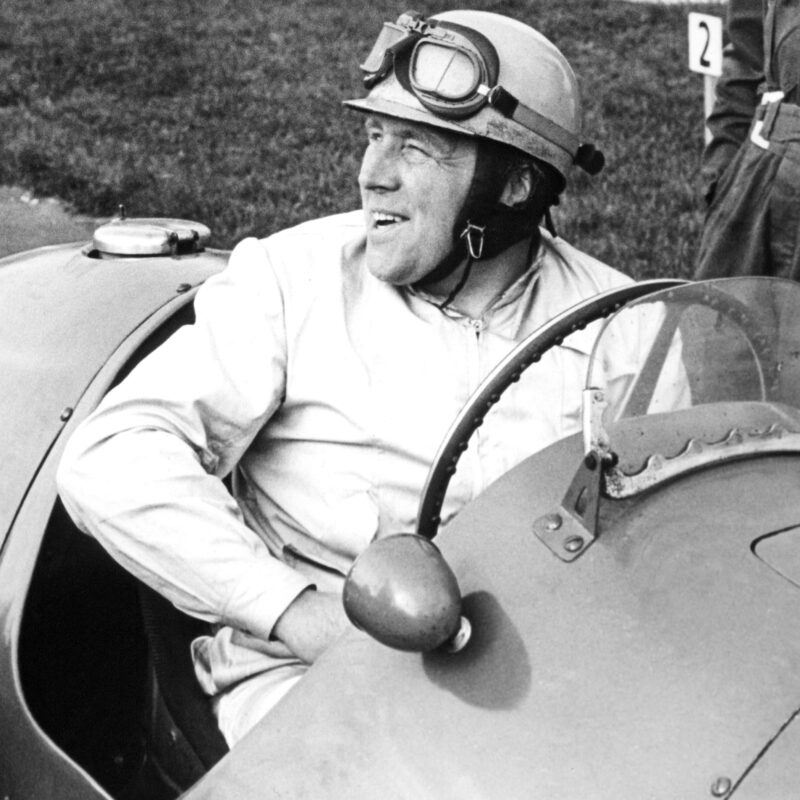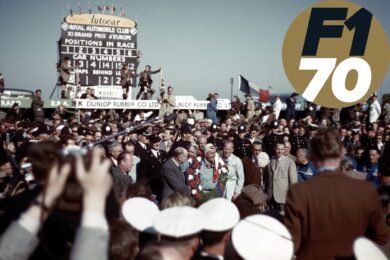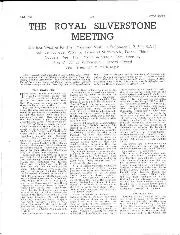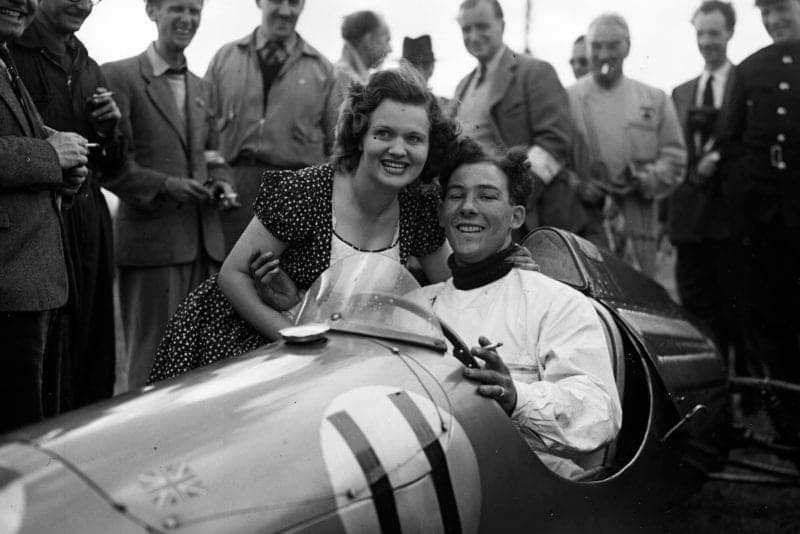The other Brits were ‘tortoises’ in comparison.
The best of them – as he had been in the corresponding (non-championship) races of 1948 (third, behind two Maserati 4CLT/48s) and 1949 (second, behind another 4CLT/48) – was Bob Gerard.
Despite – or some wags reckoned because of – severe shortsightedness, this Leicestershire repairer of commercial vehicles was Parnell’s nearest rival: his team was well organised thanks to his capable racer wife Joan and manager Frank Woolley (not the Kent and England left-handed all-rounder), and his modification/preparation of ERA R14B was sound and thorough.
His driving, in turn, was consistent and strategic, his duels with ‘Cuth’ Harrison – his more flamboyant Sheffield counterpart in the more ostentatiously modified R8C – thrilling burgeoning crowds much in need of a thrill.
(They had joined forces to finish fourth behind a trio of Alfetti in the 1947 Belgian GP.)
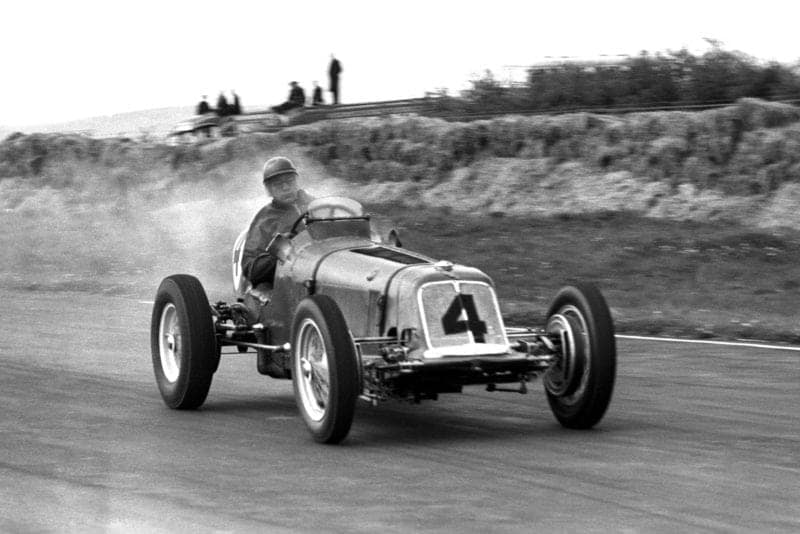
Bob Gerard at the wheel of an ERA at the 1951 Festival of Britain Trophy
Getty Images
They were back at it again – in front of 150,000 – battling for sixth place on this sunny day at Silverstone, Motor Sport sagely noting: “Gerard was content to tail Harrison, away in the background, but the note of his ERA spelt reliability and his driving looked safe as houses.”
Faster ERA drivers in more modern (1939!) E-Types had suffered early baths.
Farmer Peter ‘Skid’ Walker had qualified 10th – 5.8sec behind Farina – but suffered gearbox failure after just five (of 70) laps, three of which had been completed by his friend Tony Rolt, Military Cross with bar.
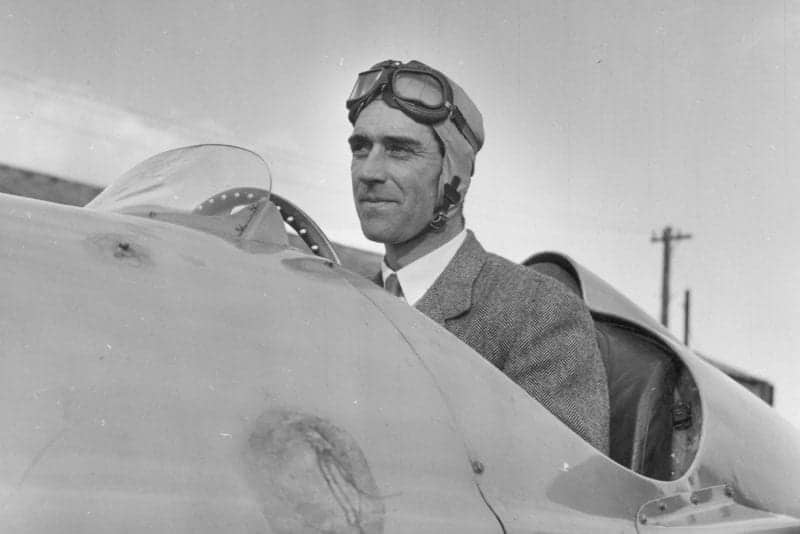
Peter Walker would go on to Le Mans success
Getty Images
This pair had been the bright young things of pre-war British motor racing in ERA B-Types, but they would have to wait until Jaguar broke new technological ground to have their days of days at Le Mans in 1951 and 1953 respectively, co-driven by Peter Whitehead – another pre-war ERA mate – and Duncan Hamilton respectively.
Leslie Johnson had bought the ERA kit and caboodle in November 1947, as it morphed into BRM, and relocated it from Bourne in Lincolnshire to Dunstable. Though rarely in the best of health after a sickly childhood, this understated, modest man from no-frills Chingford had caught the eyes of Tazio Nuvolari and Raymond Sommer no less with his skill at the wheel – and had given Jaguar’s XK120 a winning debut at Silverstone in 1949.
Having matched Gerard’s time in practice to qualify 12th – 6.6sec behind Farina – he had very little time to prove his worth on this occasion, an exploded supercharging after just two laps causing him to abandon ship as the car was blazing and still rolling.
David Hampshire, Parnell’s near neighbour, friend and team-mate did make it to the finish, ninth – six laps behind Farina and three behind Gerard and Harrison (in that order, note) – in a Maserati 4CL of Scuderia Ambrosiana.
